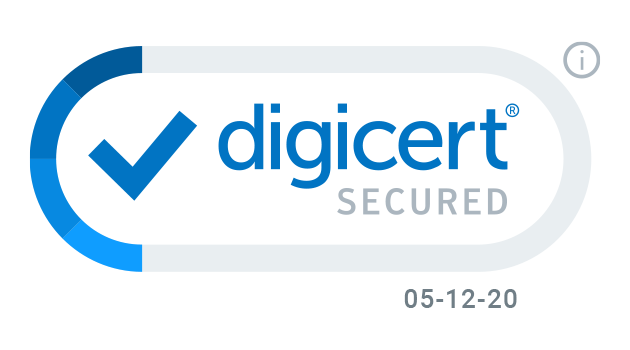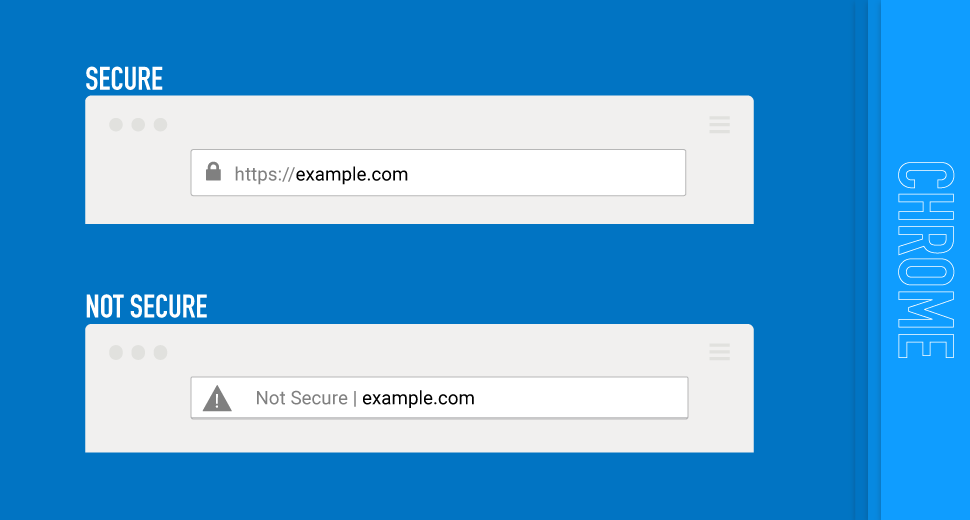How Do You Know When a Website Is Fake
How to Identify Imitation Websites

In the age of digital transformation, knowing how to identify fake websites is not but helpful; it's absolutely necessary to protect yourself online. Knowing how to spot a fraudulent website can protect your personal and work identity, your financial data and logins for your email and social media.
COVID-19 scams and place theft are on the rising. The U.Southward. Department of Health and Human Services has warned the public about fraud related to the coronavirus, which could come up in the form of calls, texts, social media messages or websites. Even every bit we transition to a new normal, online scams will not stop, and will likely increment. Agreement how to check if a website is authentic will aid protect you at present and in the future against faux websites.
How to verify a website
Check if the URL is misspelled
1 key indicator of a false site is a misspelled URL. Fraudsters may change upward a URL name slightly, like using amaz0n.com, or they may alter the domain extension — like amazon.org instead of amazon.com.
Check for site seals
A site seal signals that the site is authentic, and yous tin usually click on a site seal to reveal more information about the website and how it was verified. Seals that do nothing when clicked should not be trusted, as they are likely illegitimate copies of seals.

Look for a lock
The padlock on a website means that a site is secured by an TLS/SSL document that encrypts user data. You tin can await for the lock on the upper left of the address bar. There are three types of TLS certificates that will each display a lock: Domain Validation, Organization Validation and Extended Validation.
- Domain Validation certificate: verifies ownership of the domain. However, DV certificates do not provide organizational identification information. Therefore, it is not recommended to employ DV certificates for commercial purposes.
- Organization Validation document: organizations are authenticated by the CA (certificate authority) in official business organization registration databases. This is the blazon of standard document recommended for a commercial or public website.
- Extended Validation certificate: contains additional validation steps and offers the highest level of authentication to protect your brand and users. CAs may require sure documents and personal contact to ensure that EV certificates contain legitimate business information. They are used past the globe's leading organizations to ensure user trust past giving users high confidence that the website is authentic and owned by the entity they believe they are transacting with.
If a site doesn't have a lock, nearly browsers will display a "not secure" alert. In the by, merely looking for the lock was enough, only with the increase of online fraud you need to wait deeper than the padlock to verify a website.

Secure site vs. scam site
The padlock means that information on a site is encrypted and browsers will consider it secure. Unfortunately, nowadays, a secure site does non necessarily mean a website is rubber to buy from or share data with. Just because a site has a padlock doesn't necessarily mean that it is not a fake. Research shows upwardly to half of faux sites used for phishing have a padlock now.
Typically, fraudsters utilize DV certificates: low-level TLS certificates that some certificate authorities offer for gratuitous, so that they but take to show that they ain the site to get a lock. With DV certificates, they do not take to prove that the company is legitimate. At times they may utilize an OV or EV certificate, but because these require more endeavor to obtain, including proving a business registration, paying with a valid credit card and responding to certificate authority inquiries, most criminals are deterred from using them.
Imitation websites using TLS certificates are usually caught, but they might exist able to wreak havoc temporarily with a certificate.
Look beyond the lock
You should look beyond the lock by clicking on it in one case to reveal more information. For the highest level of authentication, if you click on the lock information technology will display "Issued to: [Company Name]" underneath "Certificate (Valid)." Unfortunately, this functionality just currently works on desktop browsers. But whether yous're on a mobile browser or desktop, the principles of looking beyond the lock to verify if a website is secure remain the same.
Run site through a website checker
When in doubt, utilize a website checker to verify if a website is secure. A secure website cheque can let you know any vulnerabilities on the site, if it is using encryption and what level of verification a site has.
Additional ways to verify a website
Likewise checking for a lock, site seal and running the URL through a website checker, also look for the following trust indicators on a site:
- A privacy policy
- A return policy
- Contact data for the business, similar a telephone number and accost
- Correct spelling and grammar
- Online reviews (simply Google "reviews for [site name]" to detect online feedback)
In full general, avoid any deals that seem also good to be true, considering they probable are.
What to exercise if you find a fake site
If you've landed on a fraudulent site, do not provide any sensitive information similar financial details, a log in and password, verification codes, a Facebook login, or even your name and contact information. When in doubt, don't fill up information technology out. Additionally, do non click on links from unfamiliar emails, online posts or DMs. Knowing if a site is fake volition aid you know whether or not to purchase from a site.
You lot should report a simulated site to Google Safe Browsing and shut out of it right abroad.
UP Next

three Surprising Uses of PKI in Large Companies and How to Ensure They Are all Secure
4 MIN READ
Source: https://www.digicert.com/blog/how-to-identify-fake-websites
0 Response to "How Do You Know When a Website Is Fake"
Post a Comment